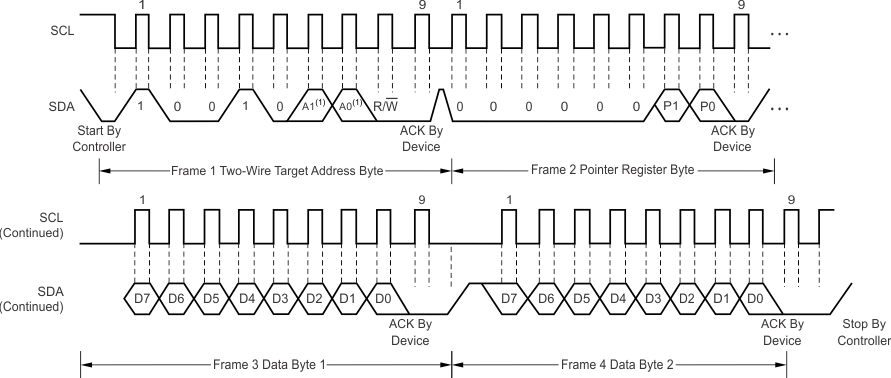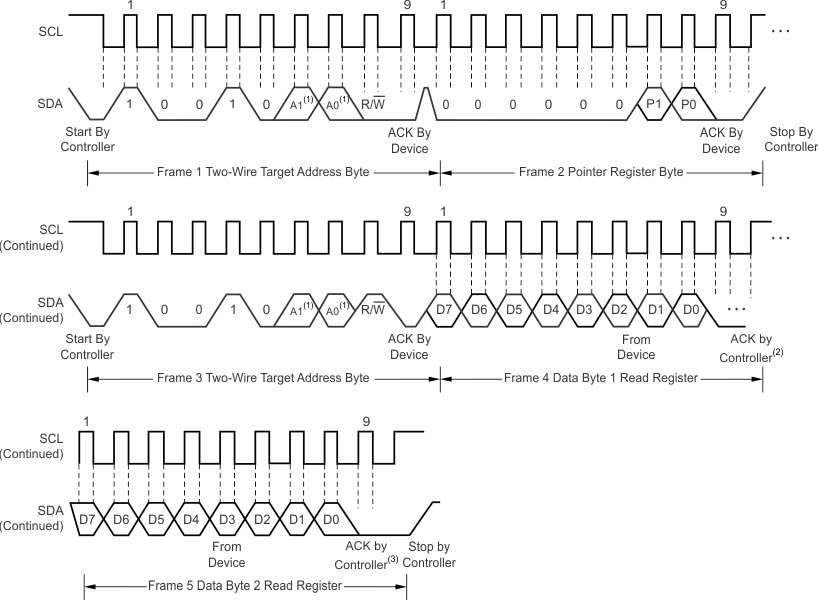SLOS887F September 2014 – June 2022 TMP112-Q1
PRODUCTION DATA
- 1 Features
- 2 Applications
- 3 Description
- 4 Revision History
- 5 Description (continued)
- 6 Pin Configuration and Functions
- 7 Specifications
-
8 Detailed Description
- 8.1 Overview
- 8.2 Functional Block Diagram
- 8.3 Feature Description
- 8.4 Device Functional Modes
- 8.5 Programming
- 9 Application and Implementation
- 10Power Supply Recommendations
- 11Layout
- 12Device and Documentation Support
- 13Mechanical, Packaging, and Orderable Information
Package Options
Mechanical Data (Package|Pins)
- DRL|6
Thermal pad, mechanical data (Package|Pins)
Orderable Information
8.3.2.9.1 Two-Wire Timing Diagrams
See the Section 7.7 table for timing specifications.
 Figure 8-3 Two-Wire Timing Diagram
Figure 8-3 Two-Wire Timing Diagram
A. The values of A0 and A1 are determined by the ADD0 pin.
Figure 8-4 Two-Wire Timing Diagram for Write Word Format
A. The values of A0 and A1 are determined by the ADD0 pin.
B. The controller must leave the SDA pin high to terminate a single-byte read operation.
C. The controller must leave the SDA pin high to terminate a two-byte read operation.
Figure 8-5 Two-Wire Timing Diagram for Read Word Format
A. The values of A0 and A1 are determined by the ADD0 pin.
Figure 8-6 Timing Diagram for SMBus ALERT